Markets
 Macro Outlook: Catalysts, Confidence & Cuts
Macro Outlook: Catalysts, Confidence & Cuts
Macro discussion of topics including US growth and the consumer, international markets, inflation, the Federal Reserve, and equity market themes.
 Quality Comparison: Minimum Volatility and High Dividend
Quality Comparison: Minimum Volatility and High Dividend
Historical analysis shows how the equity Quality factor has outperformed Minimum Volatility and High Dividend factors since 1995.
 Bubble Trouble?
Bubble Trouble?
Portfolio manager and strategist Jack Janasiewicz discusses inflation anomalies, February market highs, AI, and comparisons with the dot-com bubble.
 What’s It Take to Be an AI Winner?
What’s It Take to Be an AI Winner?
AI will impact every business, but only a few companies will be winners like Nvidia, says Loomis Sayles’ Aziz Hamzaogullari.
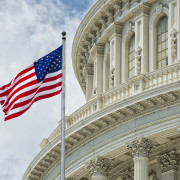 Avoid Distraction This Election Year
Avoid Distraction This Election Year
Is the stock market more volatile during US presidential election years? A closer look at 2000, 2008 and 2020 offers some perspective.
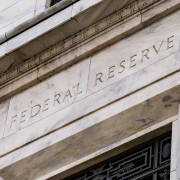 Herding Hawks at the Fed
Herding Hawks at the Fed
Portfolio manager and strategist Jack Janasiewicz discusses inflation nuances and the Federal Reserve’s need for “greater confidence” before cutting rates.
 Plan Ahead for Tighter Spreads
Plan Ahead for Tighter Spreads
As the yield difference across fixed income securities narrows, actively managed bond funds may offer advantages for bearish – and bullish – investors.
 What’s Behind the Value Advantage of International Stocks?
What’s Behind the Value Advantage of International Stocks?
International stocks may have a value advantage despite higher earnings growth in the US, explains Harris Associates’ David Herro.
 Can You Bank on US Financial Stocks for Value?
Can You Bank on US Financial Stocks for Value?
Value investing expert Bill Nygren, CIO-US, Harris Associates, breaks down why US bank stocks look attractive today.
 Sustainable Investing: Transformational trends to watch
Sustainable Investing: Transformational trends to watch
Compelling AI applications, renewable energy recovery, and pharma developments are considered for 2024 by Jens Peers.
 What Really Matters in 2024
What Really Matters in 2024
Portfolio manager and strategist Jack Janasiewicz explains why growth, labor trends and risk appetite are what matters most to the markets this year.
 Portfolio Manager Insights: Themes & Risks for 2024
Portfolio Manager Insights: Themes & Risks for 2024
From a recession to AI, portfolio managers share diverse views on the big topics shaping investment decisions in 2024.
 Managing Equity Market Volatility in 2024
Managing Equity Market Volatility in 2024
Catalysts for market volatility and ways to help manage it in portfolios are covered by an options expert at Gateway.
 Going Where the Value Is Greater: International Equities
Going Where the Value Is Greater: International Equities
Catalysts for value investing are explored by David Herro, CIO-International Equities at Harris Associates/Oakmark Funds.
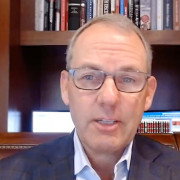 Could Small Cap Stocks Be a Sweet Spot in 2024?
Could Small Cap Stocks Be a Sweet Spot in 2024?
Why the small cap stock universe is an appealing place for Vaughan Nelson’s Chris Wallis to be investing in is explored.
 Macro Outlook: Turn the Page
Macro Outlook: Turn the Page
Portfolio strategists offer their take on the Treasury market, interest rates, labor markets, consumption trends and attractive market sectors.
 Rate Cuts on the Horizon?
Rate Cuts on the Horizon?
The latest economic data prints are paving the way for interest rate cuts in 2024 according to portfolio manager and strategist Jack Janasiewicz.
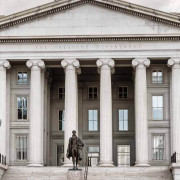 Straight Talk on the Treasury Market
Straight Talk on the Treasury Market
Who’s buying? Who’s selling? What about the deficit? Portfolio Manager Jack Janasiewicz discusses the dynamics and mechanics roiling the US Treasury market.
 Value Investing Amid a Turbulent Fixed Income Climate
Value Investing Amid a Turbulent Fixed Income Climate
View fixed income through a value investing lens and overlook short-term concerns to uncover opportunity.
 Value Gap in US Equities Is Widening Again
Value Gap in US Equities Is Widening Again
A number of low price-to-earnings stocks are making it an attractive environment for US stock pickers, explains Bill Nygren, CIO-US at Harris Associates.
 Triple Discount in International Equities
Triple Discount in International Equities
Significant value in international equity markets and why higher for longer interest rates should benefit European financials is explained by David Herro.
 Cruel September
Cruel September
Portfolio Manager Jack Janasiewicz examines seasonality patterns and the rise in bond yields, oil, and the dollar that weighed on risk assets in September.
 Corporate Bond Shortage on the Horizon?
Corporate Bond Shortage on the Horizon?
Higher interest rates have changed supply, demand and spread dynamics for investment grade corporate bonds, particularly for longer duration issues.
 Bullwhips and the Extrapolation Effect
Bullwhips and the Extrapolation Effect
Portfolio Manager Jack Janasiewicz explains why extrapolating current market trends into the future based on the bullwhip effect may be misguided.
 What’s Next for Europe’s Natural Gas Dilemma and Economy?
What’s Next for Europe’s Natural Gas Dilemma and Economy?
Europe’s avoidance of an energy crisis in 2022, natural gas supply/demand, attractive valuations, and the investment opportunity in the region are analyzed.
 Revalidating the Case for Duration in Fixed Income Portfolios
Revalidating the Case for Duration in Fixed Income Portfolios
Three scenarios for where the yield curve may be at year-end 2024 and the advantages of adding duration to fixed income portfolios today is analyzed.
 Returns on Cash May Be Lower Than You Think
Returns on Cash May Be Lower Than You Think
While many investors are satisfied with current returns on money market funds and other short-term investments, this may not be the best strategy right now.
 Outlook & Opportunities: Global Equities
Outlook & Opportunities: Global Equities
Diverse views on growth trends beyond AI, a recession, China, and where the value may be across global markets are offered by our equity managers.
 Fixed Income Framework: Cyclicality vs. Inflation
Fixed Income Framework: Cyclicality vs. Inflation
Framework shows how investors can adjust their bond holdings to align with their outlook for inflation, growth and recession scenarios.
 Positioning Portfolios for Fading Inflation
Positioning Portfolios for Fading Inflation
As year-over-year inflation shows signs of peaking, investors may want to revisit portfolio allocations.
 Welcome to the Meh Market
Welcome to the Meh Market
After a first half run-up, our market strategists think rate cuts are already priced in, leaving little to get excited about in the second half of 2019.

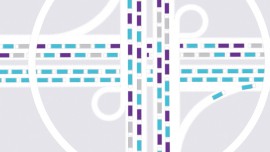



 All About The Rates
All About The Rates